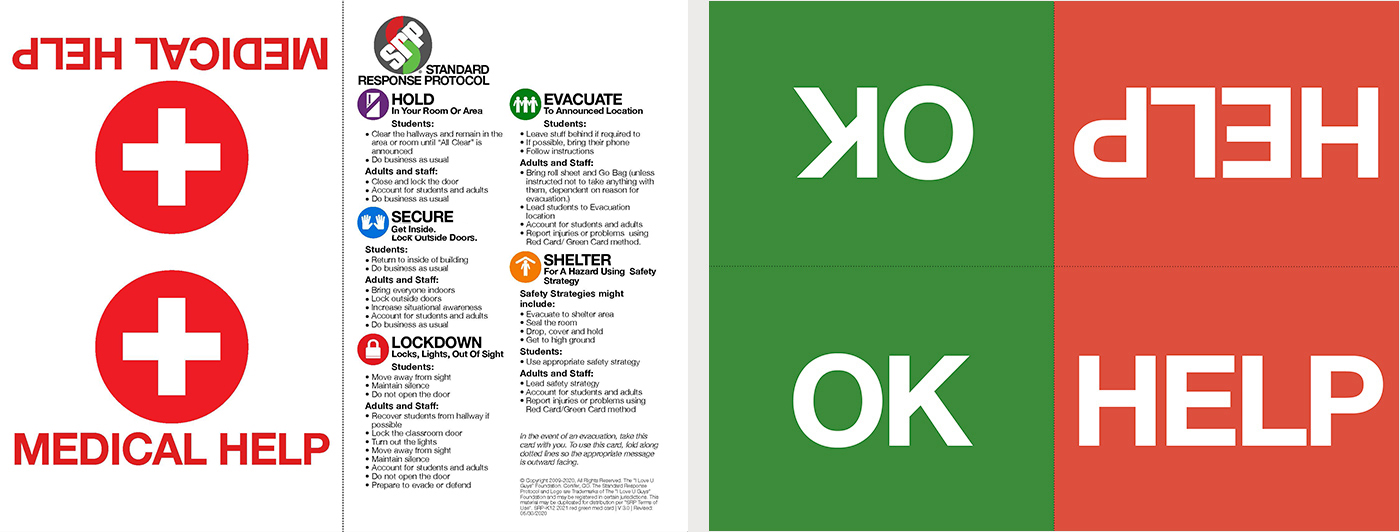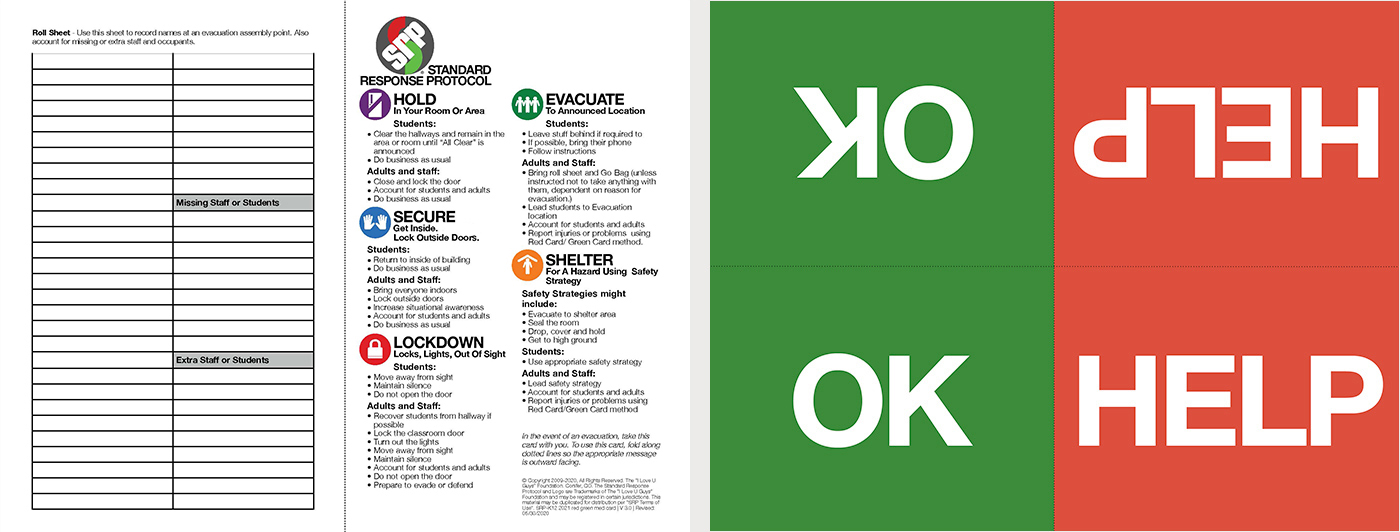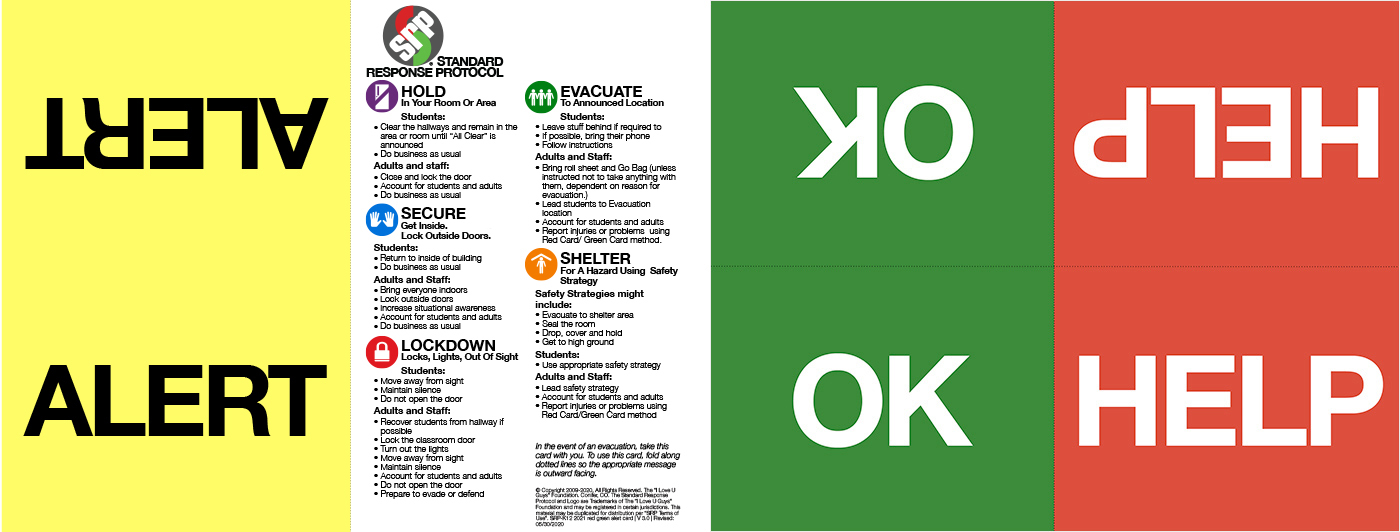TxSSC
K-12 Standard Response Protocol Toolkit
2.4 Evacuate

Condition
Evacuate is called when there is a need to move students from one location to another.
Public Address
The public address for Evacuate is: "Evacuate! To a Location." and is repeated twice each time the public address is performed. For instance, "Evacuate! To the Flagpole. Evacuate! To the Flagpole."
“Evacuate! To a location.
Evacuate! To a location.”
Actions
The Evacuate Protocol demands students and staff move in an orderly fashion.
Incident Command System
The School Incident Command System should be initiated.
Responsibility
The classroom teacher or administrator is usually responsible for initiating an evacuation. The directives or actions may vary for fire, bomb threat, or other emergencies. In a police-led evacuation, students may be instructed to form a single file line and hold hands front and back, or students and staff may be asked to put their hands on their heads while evacuating. Other directions may be invoked during an evacuation; students and staff should be prepared to follow specific instructions given by staff or first responders.
Preparation
Evacuation preparation involves the identification of facility Evacuation Points, as well as student, teacher, and administrator training.
Evacuation Assembly
The Evacuation Assembly refers to gathering at the Evacuation Assembly Point(s). Teachers are instructed to take roll after arrival at the Evacuation Assembly Point(s).
Drills
In Texas, Evacuation drills must be performed at least once per school year. Fire evacuation drills are mandated separately in Texas to four per school year, two per semester. It is recommended that you discuss fire evacuation drills with your local fire marshal to ensure compliance with local fire code.
Contingencies
Students are trained that if they are separated from their class during an evacuation, then joining an evacuation line is acceptable. They should be instructed to identify themselves to the teacher in their group after arriving at the Evacuation site.
Standard Reunification Method (SRM)
The “I Love U Guys” Foundation has developed guidance for reunifying parents with their children. These materials are available at no cost to districts, departments, and agencies. You can access the SRM materials from the “I Love U Guys” website by clicking the button below.
K-12 Standard Reunification Method Toolkit (Texas Edition)
The K-12 Standard Reunification Method (SRM) Toolkit offers guidance and resources for incorporating the Standard Reunification Method into a school safety plan. School emergencies may require an evacuation or change the operational schedules of a school, necessitating a well-organized and structured way to reunite students with parents and guardians while the school retains accountability for their students. The Standard Reunification Method provides guidance for schools in the development and execution of student and parent reunifications.
In 2025, legislation included measures to ensure the use of standardized response protocol terminology to better facilitate communication between law enforcement, emergency services, district employees, and the public. Additionally, emergency operations plans (EOPs) must address prevention, mitigation, preparedness, response, reunification, and recovery. Each school district, open-enrollment charter school, and public junior college district must now address reunification as defined by the Texas School Safety Center.
Red Card/Green Card/Med Card
After taking roll the Red/Green/Med Card system is employed for administration or first responders to quickly and visually identify the status of the teachers' classes.
(Select only one of the three card styles below.)
(Click above image to download Medical Card)
- Green Card (OK) - All students accounted for, no immediate help is necessary
- Red Card (Help) - Extra or missing students, or vital information must be exchanged
- Red and White Cross (Medical Help) - Immediate medical attention is needed
Schools may opt to use the SRP single sheet advisory which can be folded to any visual indicator.
Red Card/Green Card/Roll Card
An alternative design to the Red/Green/Med Card is the Red/Green/Roll Card.
(Click above image to download Roll Card)
Red Card/Green Card/Alert Card
Another alternative the Red/Green/Alert Card.
(Click above image to download Alert Card)
For more information about the use of these cards see Appendix B of this Toolkit.


